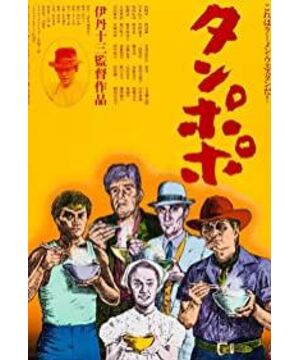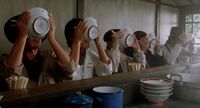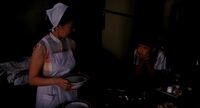The main line of the film is of course the story of how tampopo makes the ideal ramen. Ramen is a mass food, but even mass food can strive for perfection, whether it is the taste of the soup, the texture of the noodles, or the meticulous service. But anyway, ramen is common people food after all. In contrast, the man in white in the film represents the aristocracy and was shot to death in the end, indicating the end of the era of food aristocracy in the eyes of director Itami San.
In addition to the main line, the movie has many independent segments, each with its own charm. A la carte at a high-end French restaurant makes a mockery of Japanese social hierarchies. The big boss with high authority does not know how to pretend to be blind, and his subordinates only dare to draw tigers and cats. No one would have thought that the guy with the lowest status in the company is a big connoisseur of French food. By the way, the Japanese society in the 1980s was very foreign-loving and foreign-loving. Heineken was required to drink beer in high-end French restaurants. Now, they all order Japan's own draft beer. Who would go to Japan to drink Heineken beer! The part of eating pasta is also super satirical about the blind westernization of Japan. The way the various clips are connected is very clever, obviously influenced by French movies, but I still don't quite understand the meaning of the whole movie. Maybe it's the director's willfulness, just play whatever you want. The part where the dying wife is called to make dinner is a wonderful satire of the patriarchal society in Japan.
The image of the Chinese people in the film is quite obscene, and it would never be filmed like this today.
View more about Tampopo reviews











